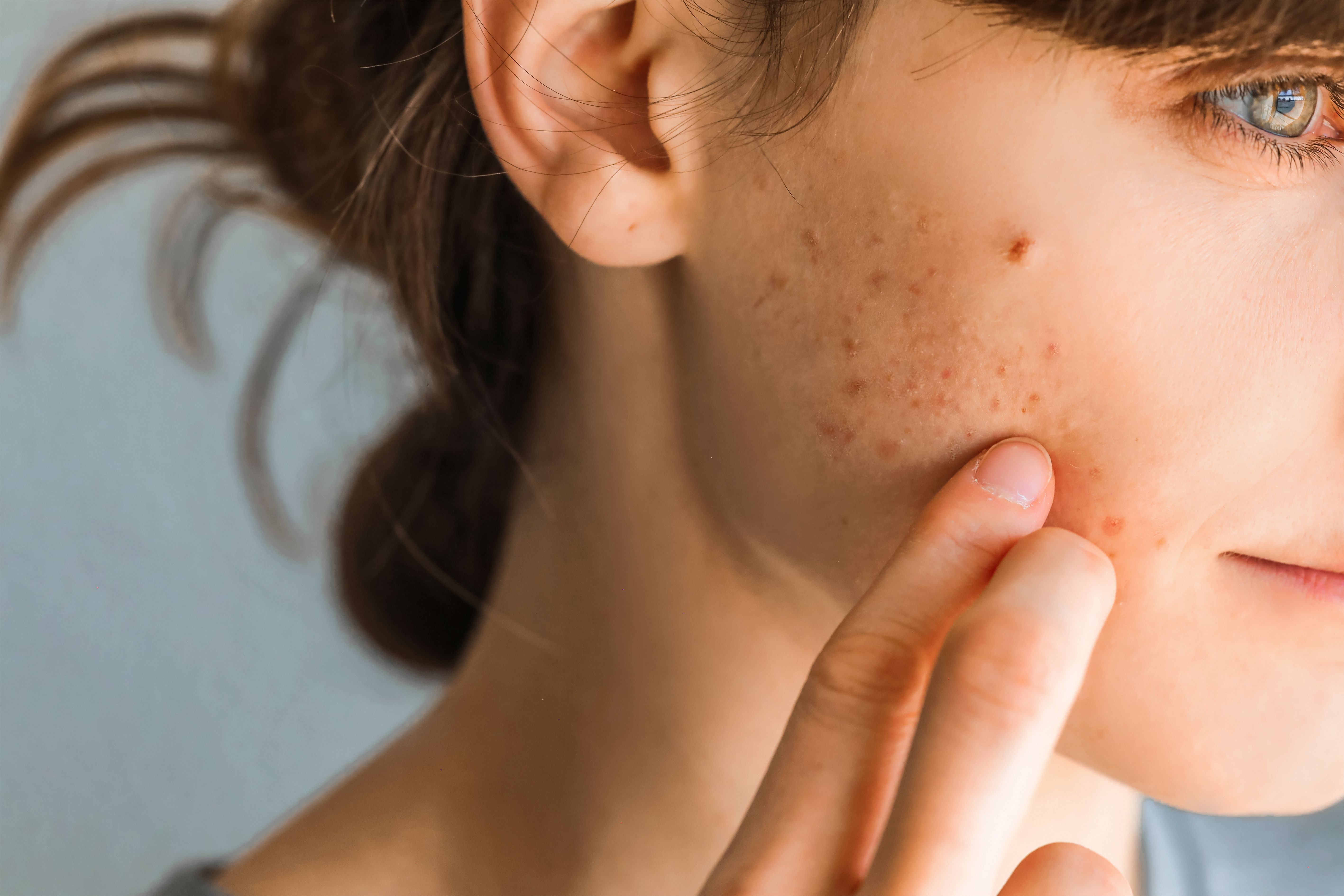- Case-Based Roundtable
- General Dermatology
- Eczema
- Chronic Hand Eczema
- Alopecia
- Aesthetics
- Vitiligo
- COVID-19
- Actinic Keratosis
- Precision Medicine and Biologics
- Rare Disease
- Wound Care
- Rosacea
- Psoriasis
- Psoriatic Arthritis
- Atopic Dermatitis
- Melasma
- NP and PA
- Skin Cancer
- Hidradenitis Suppurativa
- Drug Watch
- Pigmentary Disorders
- Acne
- Pediatric Dermatology
- Practice Management
- Prurigo Nodularis
- Buy-and-Bill
News
Article
New Study Compares Infection Risk of AD Systemic Therapies
Author(s):
Key Takeaways
- Atopic dermatitis increases susceptibility to infections, with systemic therapies like JAK inhibitors posing higher risks than biologics.
- A multicenter study found JAK inhibitors associated with higher infection rates, especially herpetic infections, compared to biologics.
The study found dupilumab-treated patients had the highest probability of remaining infection-free over 52 weeks.
The factors of atopic dermatitis (AD), such as compromised epidermal barrier function, immune dysregulation, and changes in the skin microbiome, contribute to an increased susceptibility to bacterial, viral, and fungal skin infections. This can significantly affect morbidity in AD patients. Furthermore, AD is associated with a heightened risk of extracutaneous infections, including respiratory and urinary tract infections, even in patients not undergoing immunosuppressive therapy. The degree of infection risk correlates with AD severity, making infection surveillance a critical consideration in therapeutic decision-making for moderate to severe AD.1
Systemic Therapies and Infection Risk
Two primary classes of targeted systemic therapies for moderate to severe AD include biologics (dupilumab and tralokinumab) and Janus kinase inhibitors (JAKi), such as abrocitinib, baricitinib, and upadacitinib. These therapies vary in their mechanisms of action, with JAK inhibitors carrying a broader immunosuppressive effect that may increase infection susceptibility. Current infection risk data largely stems from randomized controlled trials, but real-world studies remain limited.2 In an effort to remedy this, researchers behind a recent study aimed to assess the differential infection risk of biologic and JAKi treatment in patients with moderate to severe AD in a real-world setting.3
Study Design and Methods
A multicenter, prospective observational study analyzed infection risks in patients with AD receiving biologics or JAKi from the Dutch BioDay registry between October 2017 and July 2024. Patients underwent comprehensive infection screening before treatment initiation, and those with pre-existing immunodeficiencies were excluded. Follow-up assessments were conducted at baseline, weeks 4 and 8 (for JAKi), and subsequently every 3 to 6 months. Treatment regimens followed clinical best practices, with dose tapering applied for disease control.
Outcome Measures:
The study's primary endpoint was treatment-emergent infections (TEIs), categorized using the Medical Dictionary for Regulatory Activities (MedDRA) classification and assessed for severity per the Common Terminology Criteria for Adverse Events (CTCAE) guidelines. Infection history, atopic comorbidities, and prior immunosuppressive therapy were considered potential confounders.
Statistical Analysis:
Infection incidence rates were reported per 100 patient-years (PY). Cox regression analyses adjusted for confounding factors, and sensitivity analyses excluded skin infections to mitigate overestimation. Propensity score matching (PSM) ensured comparability between treatment groups.
Results
Among 1793 patients and 2366 treatment episodes (TEs), the overall infection incidence rate was 19.6 per 100 PY. JAKi therapies were associated with higher infection rates than biologics:
- Biologics: Dupilumab (13.6 per 100 PY), Tralokinumab (22.0 per 100 PY)
- JAKi: Abrocitinib (65.5 per 100 PY), Baricitinib (63.5 per 100 PY), Upadacitinib (58.4 per 100 PY)
The most frequent infections included skin infections (53.4%) and respiratory tract infections (19.9%). Herpes simplex infections were significantly more common in JAKi-treated patients (11.3–17.2 per 100 PY) compared to biologics (2.6–3.6 per 100 PY). Severe infections occurred in 4.9% of cases, primarily requiring hospitalization.
Treatment Discontinuation and Infection Severity
Infections led to permanent treatment discontinuation in 1.7% of TEs, predominantly in JAKi-treated patients due to herpes simplex, herpes zoster, and bacterial skin infections. Temporary treatment interruptions were also more frequent with JAKi (12.9% vs. 1.2% in biologics).
Time-to-Infection Analysis:
At 52 weeks, the study found biologic-treated patients had a higher probability of remaining infection-free compared to JAKi-treated patients:
- Dupilumab: 86.1%
- Tralokinumab: 81.1%
- JAKi (average across all agents): ~59%
Multivariable Analysis:
Compared to dupilumab, researchers found JAKi treatments significantly increased the risk of overall infections (HR 4.0–4.2) and skin infections (HR 2.2–3.0). Severe infections were notably higher with abrocitinib (HR 4.4), though this was not statistically significant in all models.
Discussion
This study highlights a higher infection risk among patients with AD treated with JAK inhibitors compared to biologics. The increased rates of herpetic infections and overall infection burden with JAKi therapy align with prior real-world data. While severe infections were infrequent, non-severe infections led to substantial treatment modifications, underscoring the clinical relevance of infection monitoring.
Clinical Implications
These findings support prioritizing infection risk assessment when selecting systemic therapies for AD. JAKi therapies may necessitate more stringent infection monitoring, especially for patients with a history of skin infections or atopic comorbidities. Researchers suggested future longitudinal studies are warranted to evaluate long-term safety profiles in diverse AD populations.
Conclusion
This study provides crucial real-world evidence on differential infection risks associated with biologic and JAKi treatments in moderate to severe AD. JAK inhibitors exhibit higher infection rates, particularly for herpetic infections, while biologics demonstrate a more favorable safety profile. These insights are vital for optimizing treatment decisions and improving patient outcomes in AD management.
Want to hear more pearls and expert insights on AD? Join us at the annual Revolutionizing Atopic Dermatitis Conference this June in Nashville, TN.
References
- Ong PY, Leung DY. Bacterial and viral infections in atopic dermatitis: A comprehensive review. Clin Rev Allergy Immunol. 2016;51(3):329-337. doi:10.1007/s12016-016-8548-5
- Chu AWL, Wong MM, Rayner DG, et al. Systemic treatments for atopic dermatitis (eczema): Systematic review and network meta-analysis of randomized trials. J Allergy Clin Immunol. 2023;152(6):1470-1492. doi:10.1016/j.jaci.2023.08.029
- van der Gang LF, Atash K, Zuithoff NPA, et al. Infection risk in atopic dermatitis patients treated with biologics and JAK inhibitors: BioDay results. J EurAcad Dermatol Venereol. Published online April 3, 2025. doi:10.1111/jdv.20674
Newsletter
Like what you’re reading? Subscribe to Dermatology Times for weekly updates on therapies, innovations, and real-world practice tips.







